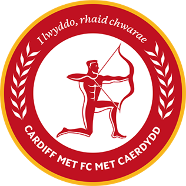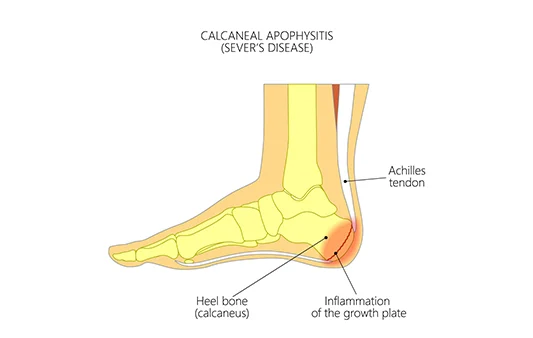
Pronation, Supination, What’s It All About?
Pronation, Supination, What’s It All About?

Pronation, Supination what’s it all about?
This is a question that I get asked every day in the clinic and even more frequently when I’m advising customers about running shoes. Pronation is a word that is bandied around in running magazines and by some Healthcare Professionals as this evil thing that can lead to injury and pain.
The truth is that pronation is a perfectly natural movement that occurs in the foot every single time you take a step. Supination is another natural movement that occurs every time you take a step.
Throughout this feature I will explain what these movements are the importance of their occurrence.
So what is Pronation?
A common misconception is an assumption that a flat foot means you pronate excessively. This is not always the case and rarely do I make reference to arch height during a consultation. Some of the fastest marathon runners in the world have “flat feet” and to assume they function poorly would be incomprehensible. As Podiatrists, we utilise more reliable indicators for foot function and when pronation occurs we are generally looking for:
- Calcaneal eversion (heels rolling in)
- Bulging of the medial malleolus (inside ankle bone)
- Concave curvature of the outer border of the foot
- Lowering of the medial arch height

What is Supination?
It is also a common mistake to assume that high arches indicate excessive supination. We have seen numerous cases where people have a high arch foot type and pronate excessively. Common indicators we look for when supination occurs are:
- Calcaneal inversion (heels rolled out)
- Bulging of lateral malleolus (outside ankle bone)
- No curvature of the lateral border of the foot
- Increase in medial arch height

*It is important to understand that both pronation and supination should occur during normal foot function*
Once we have accepted that both movements are perfectly natural we need to understand when and why they occur.

Contact phase:
This is the moment your swinging foot hits the floor, usually on the outside edge of your heel when walking or on the outside edge of your heel/midfoot/forefoot when running. As the foot hits the floor pronation starts to occur – this enables an increased loading time at the contact phase providing shock absorption for the foot and ankle.
Midstance phase:
During pronation, the foot becomes more flexible which enables it to adapt to changes in the surface of the ground. Our feet haven’t quite caught up with technology such as hard man-made surfaces like roads and pavements. Our feet are designed to allow for undulating surfaces. At this point of the gait cycle our rearfoot is starting to supinate.
Propulsive phase:
As the rearfoot continues to supinate the midfoot becomes less and less flexible to allow the foot to maintain its structure as we push off. We want the midfoot to be as stable as possible so that we don’t cause damage to the foot when propelling forward (go on your tiptoes barefoot and you will see your foot at its most stable position)
As Podiatrists, we are more interested in the timings associated with these movements than the movements themselves. Don’t let people scare you by using terms like flat footedness or fallen arches as these terms shouldn’t be used when assessing foot function. If they do use said terms ask them to explain what they mean and why it’s relevant.
So next time somebody tells you that you pronate hopefully this article will give you the knowledge to understand that it’s not a bad thing but a perfectly natural movement.
Frequently Asked Questions:
Does pronation lead to injury?
As discussed above pronation and supination are perfectly natural movements. When looking at injury there are often multiple factors that have to be explored to get to the bottom of what leads to it. When it comes to pronation we tend to look at the timings associated with the movement. Prolonged pronation can certainly lead to increased forces being applied to certain muscles and tendons but other factors have to be considered when looking at injury e.g. when the injury occurs, sports/activity, training loads etc.
What should I look for in trainers?
The world of trainers is a minefield with so many choices and styles of footwear being available. You have minimal, maximal, neutral, stability, motion control and many more. If you are a beginner I would avoid minimal footwear and stick with the most popular styles within brands such as Asics, Mizuna, Saucony and Brooks. Comfort is absolutely key when choosing a shoe, try on lots of brands and styles. Some shoe shops will perform simple gait analysis, which is fine but make sure they understand what they are looking for and if you are currently injury free in the style of shoe (neutral, stability, motion control) you are in, my advice would be not to deviate.
How do I know if I need support?
We all expect to ache after exercise and this is perfectly normal, however, if you are experiencing reoccurring aching in the foot and ankle then an increase in support may help. I would recommend popping down to your local running shop and discussing the problems you are having. If your aching and discomfort does not subside with a change of footwear or you are experiencing pain then my advice would be to seek professional help from a Healthcare Professional such as a Podiatrist, Physiotherapist etc.
Who am I?
My name is Tom Cooper and I am the Clinical Director at ACE Feet in Motion. I graduated from Uni in 2005 and have worked extensively in sports injury ever since. At ACE we provide walking and running gait analysis, general podiatry/chiropody, shock wave and Orthotic therapy.
Need help with your injury?
Click the button below to book an appointment with one of our HCPC Registered Podiatrists today!
Customer support
If you have any questions or need further assistance, we’re here to help. Feel free to reach out through our contact form or give us a call. Our dedicated team is ready to provide you with the support and information you need. Whether you're looking to book an appointment or have specific queries, don’t hesitate to get in touch.
Contact information
Official partners


